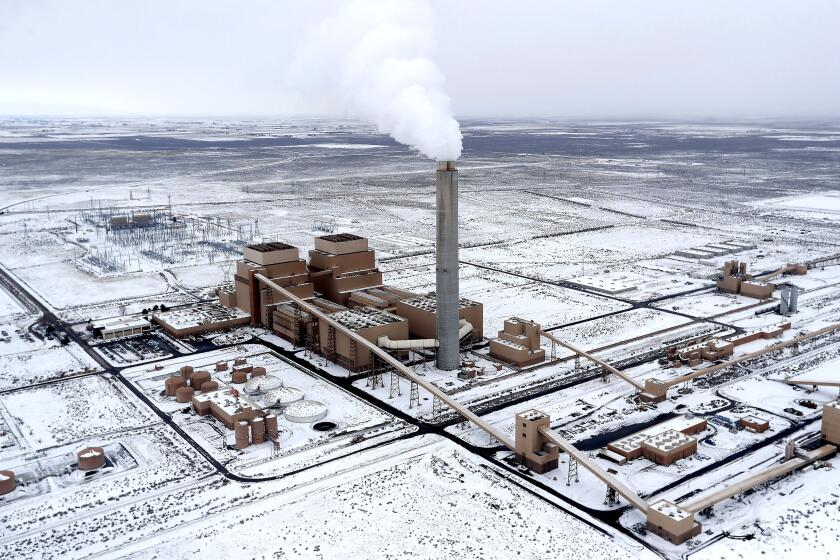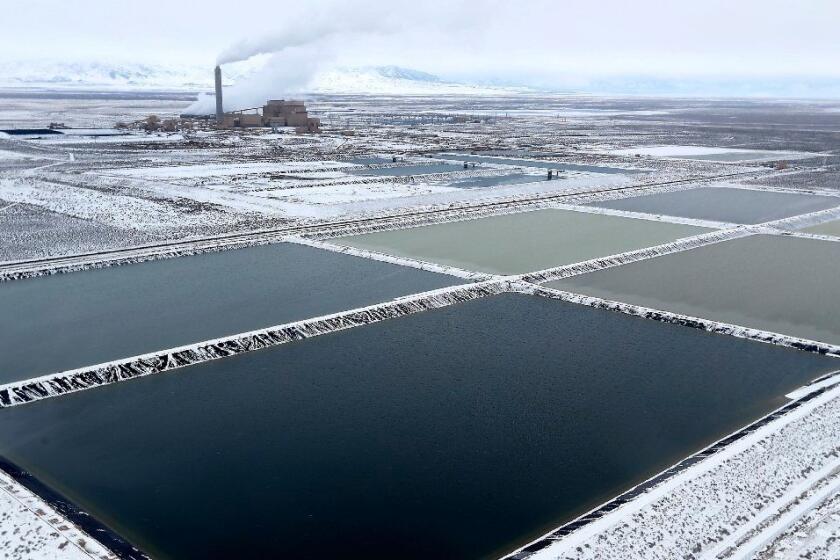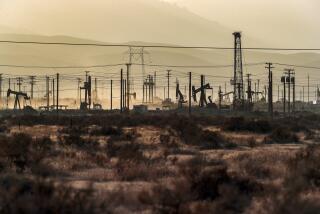Climate change activists urge Los Angeles not to build a gas plant in Utah
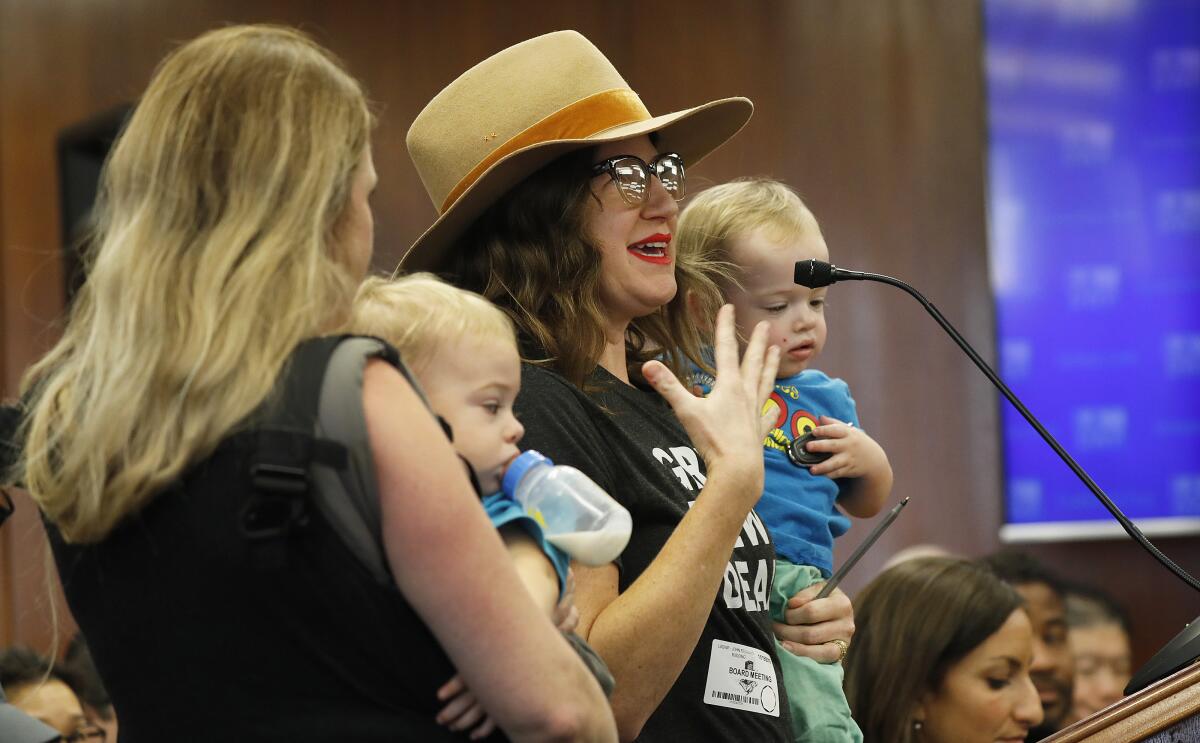
- Share via
Dozens of environmental groups and neighborhood councils are urging Los Angeles Mayor Eric Garcetti not to move forward with plans to build an $865-million gas-fired power plant in Utah, saying the investment is inconsistent with calls to stem the global climate crisis by phasing out fossil fuels as quickly as possible, and conflicts with Garcetti’s own climate agenda.
At Tuesday’s meeting of the Los Angeles Department of Water and Power board of commissioners, activists pressed city officials to replace Intermountain Power Plant — a coal plant the utility operates just outside Delta, Utah — with climate-friendly power sources such as wind, solar and battery storage, as well as energy efficiency measures back home.
LADWP is working to shut down the facility by 2025. It’s the last coal plant serving customers in California, and L.A.’s largest source of power.
The utility plans to replace Intermountain in part with an $865-million plant that runs on natural gas. Gas generates less planet-warming carbon dioxide than coal when burned. But it still contributes to rising global temperatures and climate change consequences including more destructive wildfires, droughts, floods and heat waves.
In a letter to Garcetti and the mayors of Burbank and Glendale — which are partnering with L.A. to build the gas plant — a coalition of environmentalists pointed out that Los Angeles City Council recently voted to declare a “climate emergency.”
“The low hanging fruit — literally the least we can do — is decline to build new fossil fuel infrastructure,” the letter reads, echoing the findings of scientists. “New fossil fuel infrastructure guarantees the use and maintenance of that infrastructure for decades to come, ensuring new greenhouse gas emissions at a time where we must be working to eliminate them.”
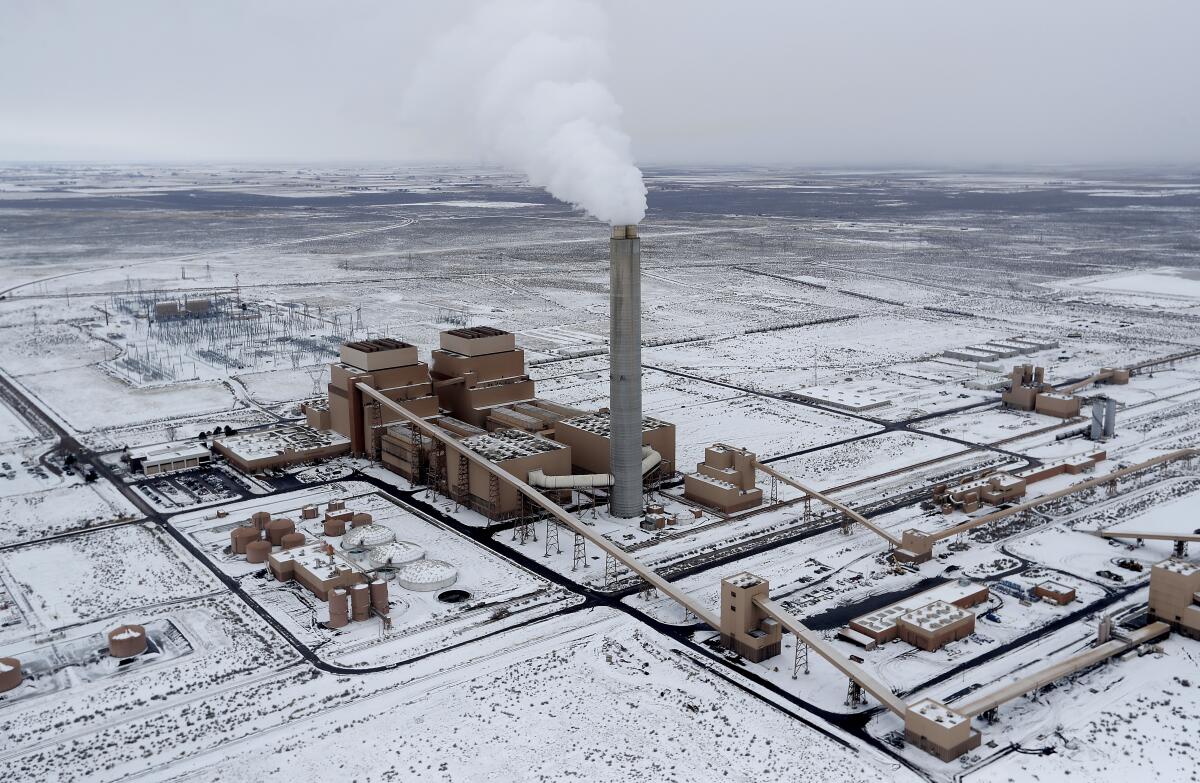
Several activists at Tuesday’s meeting alluded to Garcetti’s efforts to portray himself as a global leader in the fight against climate change.
Earlier this year, he released a sustainability plan calling for 80% of the city’s cars to run on electricity or zero-emission fuel by the mid-2030s, and for Angelenos to drive 2,000 fewer miles each year than they do now. Last month, he was elected chair of the C40 Cities Climate Leadership Group, a network of mega-cities with a combined population of more than 700 million.
Also this year, Garcetti overruled LADWP officials when he announced that Los Angeles would shut down three gas-fired power plants along the Southern California coast and invest in clean energy instead, saying, “This is the Green New Deal.”
“If we don’t want gas in our backyard, it shouldn’t be somewhere else as well,” Ethan Senser, an organizer with Food and Water Watch, said at Tuesday’s LADWP board meeting.
L.A. will build a gas-fired power plant in Utah, even as Mayor Eric Garcetti touts a “Green New Deal” to fight climate change.
Tom Pike, a member of Los Feliz Neighborhood Council’s environmental affairs committee, referred to other remarks Garcetti made to the Los Angeles Times. The mayor suggested he was open to being convinced L.A. can do without the Utah gas plant, saying that if the city did build the facility, he hoped it would be “the death cough of gas-based electricity generation.”
“Garcetti has invited us to come here and convince him not to build this plant,” Pike said during a brief rally outside LADWP’s downtown headquarters before the board meeting. “We are here to take him up on his invitation.”
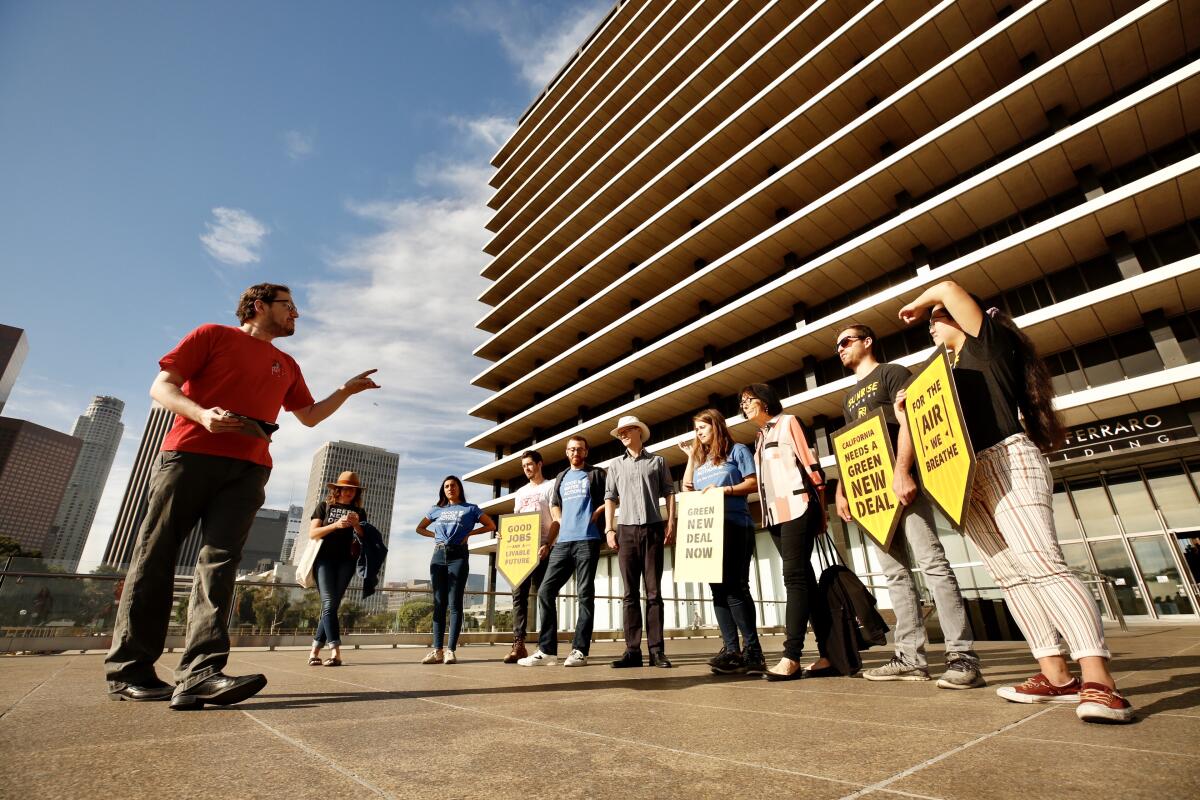
The letter to Garcetti was signed by Food and Water Watch and the Center for Biological Diversity, as well as local chapters of groups such as the Sunrise Movement, Extinction Rebellion and the Democratic Socialists of America. Other signatories included four Los Angeles neighborhood councils and several candidates for L.A. and Glendale city councils. Several Utah-based groups signed as well, including Southern Utah Wilderness Alliance and Utah Physicians for a Healthy Environment.
LADWP officials say their plans extend beyond just building a gas plant in Utah. They’re planning to import large amounts of solar and wind power through the 488-mile transmission line that runs from the Intermountain site to Southern California.
They also hope to build a compressed air energy storage facility — basically a giant battery for renewable energy — that takes advantage of the naturally occurring underground salt dome located across the street from the coal plant.
Utility officials have previously said the Intermountain gas plant would begin construction by Jan. 1. Asked Tuesday about that timeline, LADWP spokeswoman Ellen Cheng said in an email that the facility is “currently in the permitting, detailed design, and contractor procurement phase.”
Los Angeles hopes to store solar and wind power in underground salt caverns, to help replace a giant coal plant.
LADWP officials claim that without a traditional power plant at Intermountain, they won’t have the physical ability to transport solar and wind energy through the transmission line to Los Angeles. They also say they hope to eventually fuel the gas plant with clean-burning hydrogen, although the technology is still being developed and could be prohibitively expensive.
“Ultimately, Intermountain Power Project will be a clean-burning power plant,” Marty Adams, LADWP’s general manager, told the utility’s board of commissioners on Tuesday, in response to public comments. “That is the long-term goal.”

Harrison Wollman, a spokesman for the mayor’s office, said the city is “transitioning to 100% renewable energy as quickly as we can, while continuing to provide Angelenos with reliable power.”
“The investment in [Intermountain] ensures the longevity of one of our most indispensable transmission lines — which is essential to maximizing future clean energy assets and has the potential to carry enough renewable energy for millions of residents,” Wollman said in an email.
Environmentalists worry the hydrogen plans will never come to fruition, leaving Los Angeles, Burbank and Glendale with an $865-million, 840-megawatt gas plant they might have to shut down with decades left in its usable life — basically a giant stranded asset. Under California law, electric utilities must transition to 100% climate-friendly power sources by 2045.
Lucy Garcia, who introduced herself as a retired science teacher, told the LADWP board she was part of the Sierra Club-led campaign earlier this decade that convinced city officials to shut down the Intermountain coal plant ahead of schedule.
“It is heartbreaking to me to think that we are going to go back on that, go halfway on that, take half-measures on that,” Garcia said Tuesday. “We have to go completely fossil fuel-free.”
